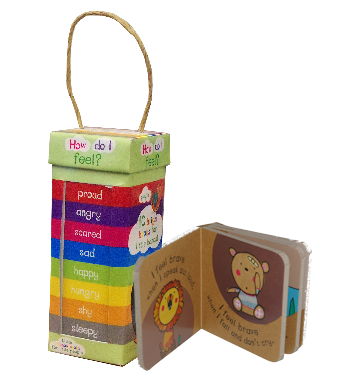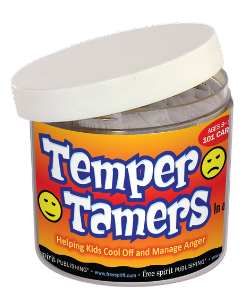 |
Hats Off - A matching game with a twist.
|
Hat's Off to this 12 minute matching game from Gamewright. Hats Off includes 56 cards and each one features a colorful, fun hat.
 |
Colorful hat cards. |
Object:
Collect the most hats to win the game.
Set up:
Shuffle the cards and deal four cards to each player. Place the rest of the deck on the table, face down.
Play:
Each players chooses one card from his hand and places it on top of his head, face down. Remember it. The first player turns over the top card from the deck. All players play at the same time and try to match that card from cards in their hand or the one on their head. The first player to place his matching card on top of the drawn card wins and takes the cards. The next player turns up a card from the deck and the process is repeated. If no one has a matching card, the next player turns one over from the top of the deck and places it face-up on the pile. In the course of the game, if the card falls from your head, the first player to yell HAT'S OFF wins the card. The person who lost the card draws another card from the pile, remembers it, and places it on his head. After each play, each player should make sure they have three cards in their hands, and one on their head, drawing from the pile if necessary. Play continues until all cards from the pile have been turned over. Person with the most hats wins the game.
Try this:
- Play a matching game by laying one of each of the eight hats on the table and then sorting the rest of the cards onto the piles.
- Hold the card stack in the non-dominant hand, push off the top card with the thumb, take it with the dominant hand and deal. Hold only half the deck at a time if the whole deck is difficult to manage.
- Practice shuffling/dealing/fanning cards.
- Work
on visual discrimination, manual dexterity, shifting, coordinated use of both hands, following directions, separation of two
sides of the hands, thumb opposition, socialization skills, process skills, play and leisure exploration and participation
In the box: 56 cards, seven each of eight different hats
Ages 6+, 2-5 players
If you are interested in purchasing this game or just want more information, click on the image below.








